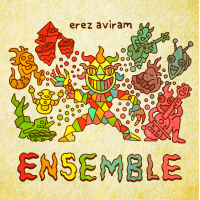Home » Jazz Musicians » Jimmy Witherspoon
Jimmy Witherspoon
One of the great post-war blues shouters, Jimmy Witherspoon, or 'Spoon, as he's known throughout the jazz and blues world, straddled the line between blues and jazz, becoming an integral participant in the history of both of these classic genres of American music. Born August 8, 1923, in Gurdon, Arkansas, the young James Witherspoon sang in church choirs much like his railroad worker father. Confidence came early as he won first prize in a singing competition at the age of five. While in his teens, Witherspoon decided to try his luck pursuing a singing career and ran away to Los Angeles. It was there that he decided to become a blues singer after seeing a performance by Big Joe Turner. Bouncing around from job to job and not having much success as a singer, Witherspoon joined the merchant marines in 1941. Moving to San Francisco in 1944, Witherspoon would sing on weekends at a club called The Waterfront in nearby Vallejo, California. Witherspoon got his big break when he was heard by bandleader Jay McShann, with whom he spent close to four years. Witherspoon eventually did go his own way with, leaving McShann's band to record as a soloist for the Supreme label. In 1949, after a few recordings that went nowhere, 'Spoon recorded a version of "Ain't Nobody's Business," which would become his signature song and featured McShann and others from the old band, went to number one on the R&B charts and stayed on the charts for 34 months, longer than any previous R&B tune. Witherspoon's next release, "In the Evening When the Sun Goes Down," reached the number five spot, following this, 'Spoon released a number of albums on a variety of labels including Modern, Federal, and the legendary Chess label. Virtually ignored by jazz and rock audiences and with financial hardships stalling large, swinging blues bands like McShann's, the rest of the 1950s found Witherspoon playing the chitlin circuit, a network of small black-owned clubs that played to mostly black audiences. For a while he played bass and sang at a club in Newport, Kentucky in a small band that also featured famed blues pianist Charles Brown. In 1959, however, 'Spoon was invited to appear at the Monterey Jazz Festival with an all-star group that included tenor saxophonist Ben Webster, trumpeter Roy Eldridge, alto saxophonist Coleman Hawkins, clarinetist Woody Herman, trombonist Urbie Green, and pianist Earl "Fatha" Hines.
Read moreTags
Jimmy Witherspoon: Blue Spoon/ Spoon In London

by Derek Taylor
‘Spoon’ was a singer who regularly defied rote categorization. The rudiments of his vocal approach were most prevalently built from the blues, but over a career that spanned decades he sang in a range of styles that ran the gamut from gospel to pop. Jazz was also a favorite song source for the singer, and Blue Spoon, the first album collected on this Prestige two-fer, finds him fitting his bluesy baritone into the context of a top-flight jazz combo. Kenny ...
Continue Reading


































